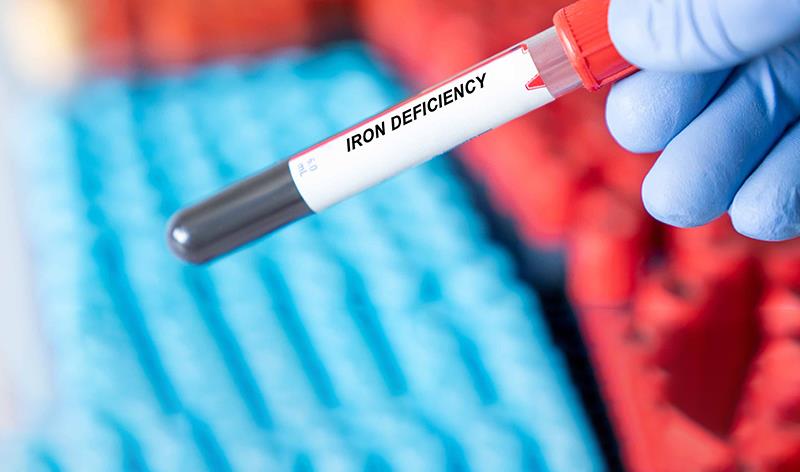Iron deficiency prevalent in patients with acute coronary syndromes





Patients with acute coronary syndromes (ACS) are prone to iron deficiency, which may lead to worse left ventricular systolic function and more inflammation, according to a study.
“Iron deficiency defined by serum iron and transferrin saturation (TSAT) criteria correlates with lower left ventricular systolic function and greater inflammation, which may explain the association between serum iron <6 µmol/L and adverse cardiovascular events,” the investigators said.
A total of 152 patients with ACS were analysed using several iron deficiency definitions, namely serum iron <6 or <13 µmol/L, TSAT <20 percent, ferritin <100 µg/L, and a combined definition (ferritin <100 µg/L or TSAT <20 percent if ferritin 100–299 µg/L). Peak cardiac troponin T was utilized to estimate infarct size.
The investigators performed Cox regression analysis to explore the relationship between iron deficiency and in-hospital complications (eg, death, sustained arrhythmias, or Killip class ≥3) and post-discharge events (eg, death, myocardial infarction, or stroke).
Depending on the definition used, iron deficiency prevalence among ACS patients ranged from 21 percent to 62 percent. Those with deficiency defined by serum iron or TSAT tended to be older, female, have more cardiovascular risk factors, and have higher high-sensitivity C-reactive protein (hs-CRP). [Am J Med 2025;138:1099-1105.e6]
Moreover, patients with serum iron <13 µmol/L and TSAT <20 percent were more likely to have worse left ventricular ejection fraction, but not greater infarct size.
Iron deficiency was not predictive of in-hospital complications, while serum iron <6 µmol/L predicted a greater risk of post-discharge events. However, this association was attenuated following adjustments for hs-CRP. Additionally, lower ferritin was associated with fewer events.
Infarct size
Previous studies reported the association of iron deficiency with a larger infarct size and a worse adverse left ventricular remodelling at 6 months. This finding is consistent with preclinical evidence suggesting that iron deficiency worsens myocardial dysfunction and favours negative left ventricular remodelling in the presence of ischaemic injury. [JACC 2021;6:567-580; Eur Heart J 2017;38:362-372]
“In human cardiomyocytes, iron deficiency impairs both contractility and relaxation,” the investigators said. “Biochemical pathways considered to mediate these effects include mitochondrial dysfunction, as well as oxidative and nitrosative stress due to endothelial nitric oxide pathway inhibition.” [Eur J Heart Fail 2018;20:910-919]
Notably, iron repletion could negate the harmful effect of iron deficiency on myocardial function.
“Despite these mechanistic premises for the contribution of iron deficiency to myocardial ischaemia, few studies have addressed the prognostic impact of iron deficiency in patients with ACS, reporting conflicting results,” the investigators said.
"Our study addresses various definitions of iron deficiency in patients presenting with both ST and non-ST segment elevation and expands previous findings by considering the impact of inflammation on the prognostic significance of iron deficiency,” they noted.
Future studies are needed to further understand myocardial iron deficiency, which can aggravate postischaemic left ventricular remodelling and have a negative impact on prognosis, according to the investigators.